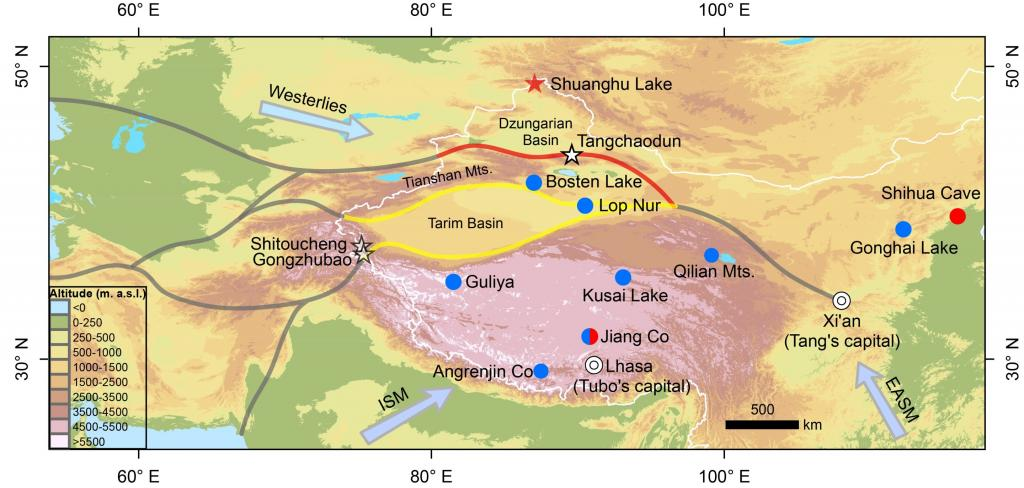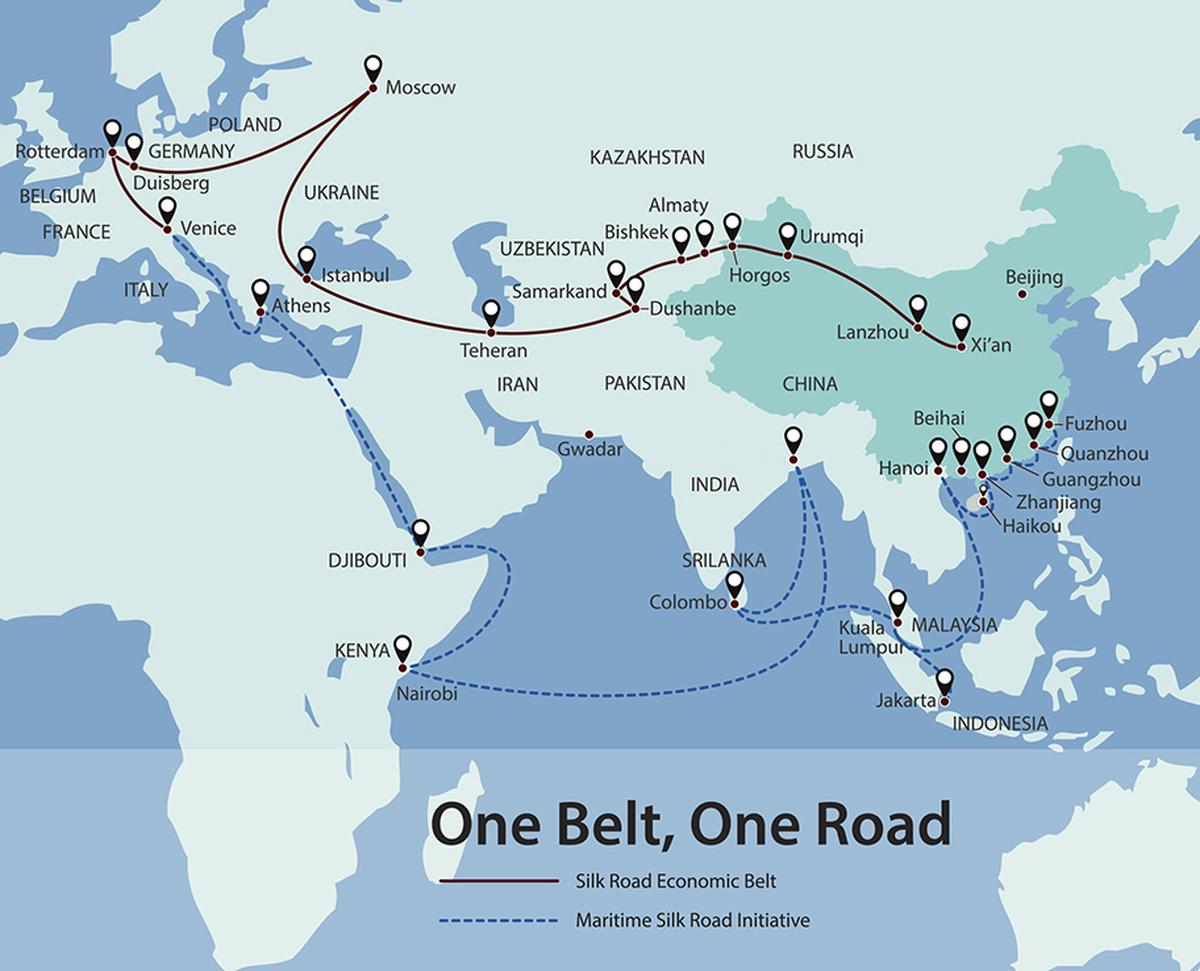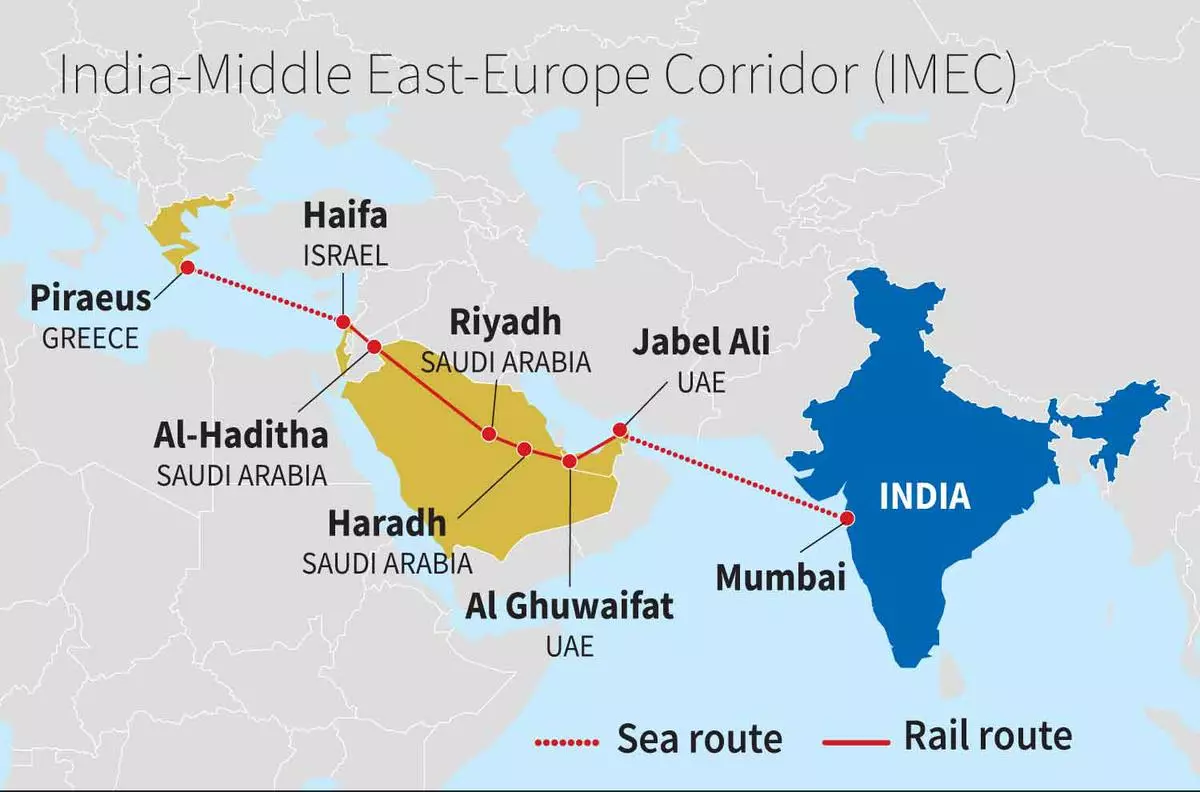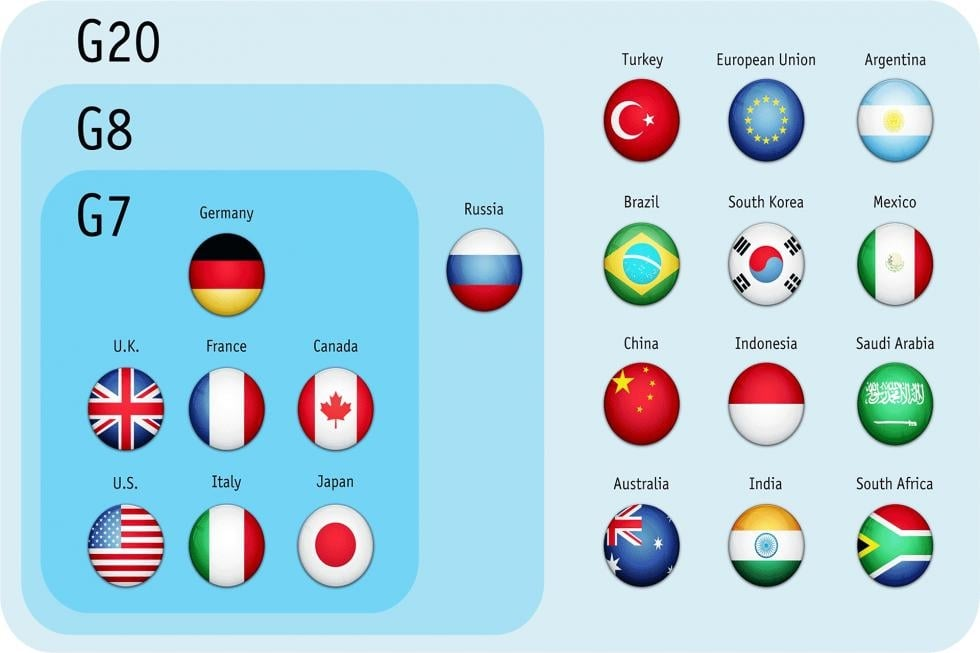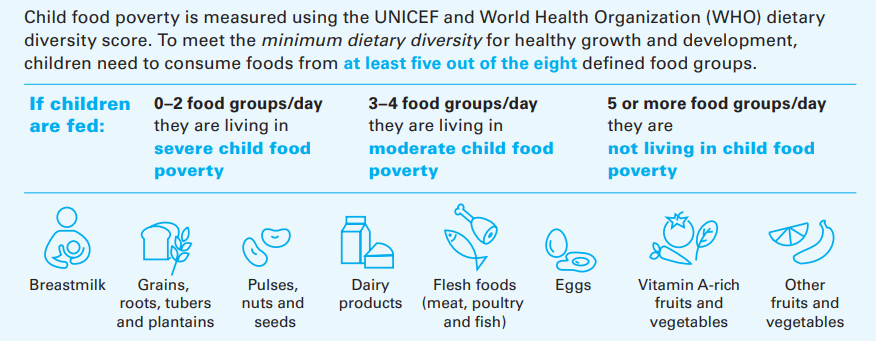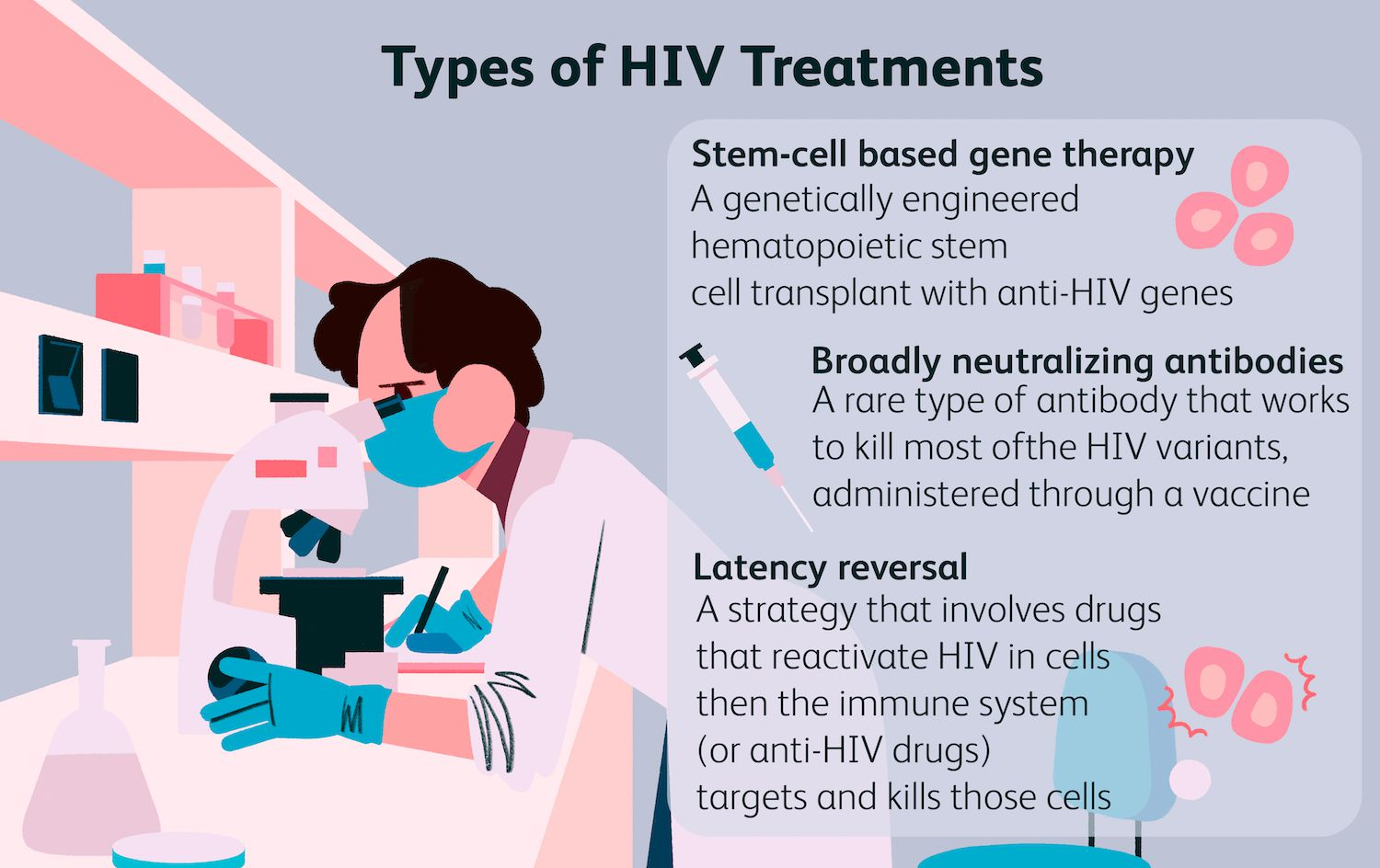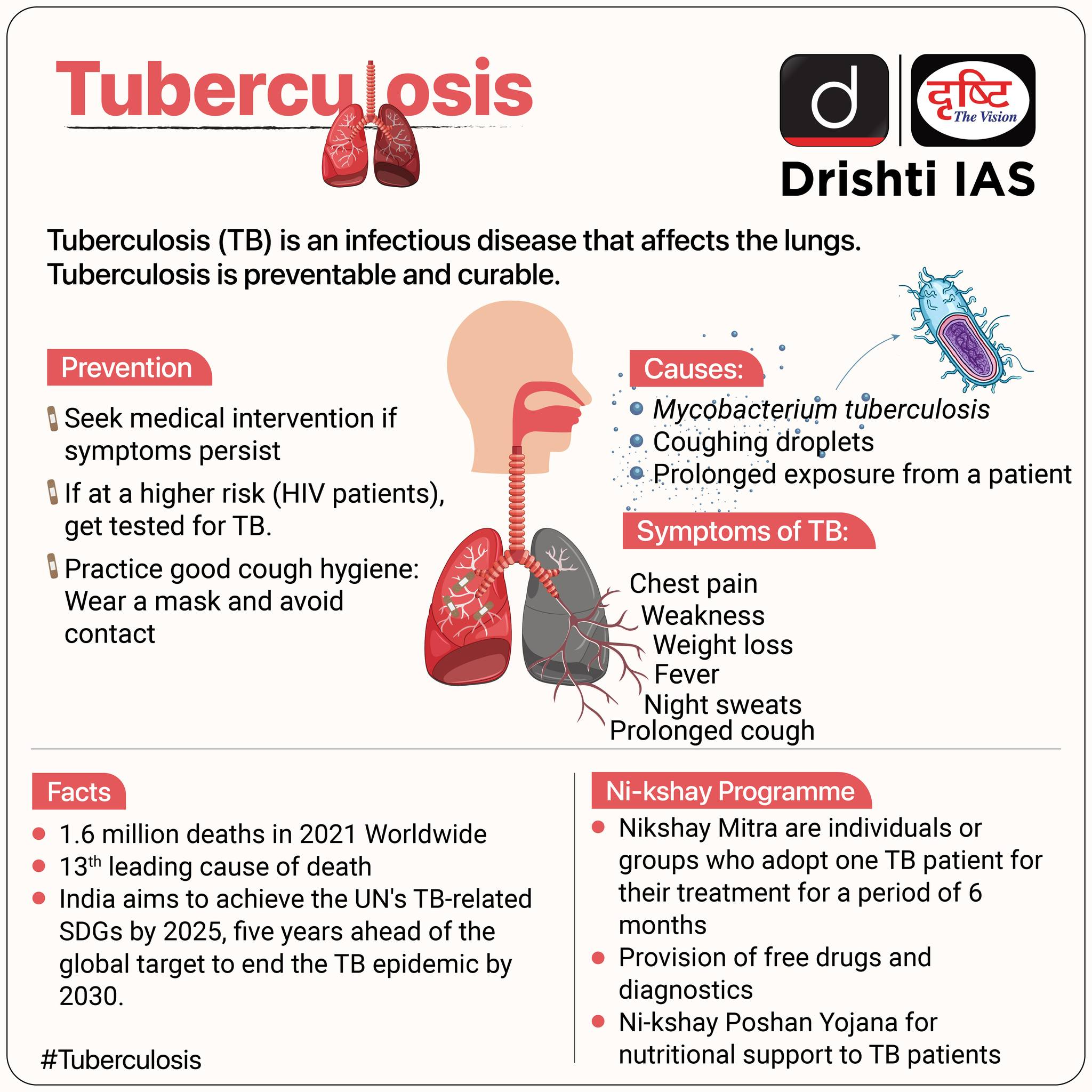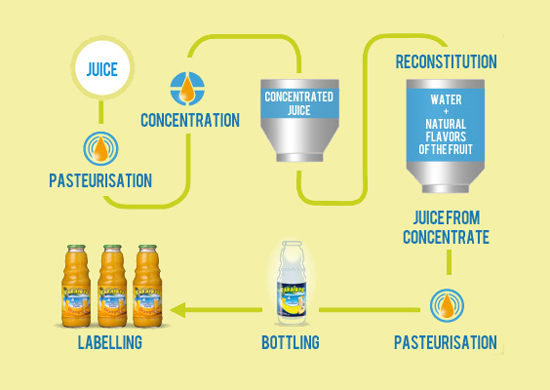International Relations
Shifting of Route of the Silk Road
For Prelims: Climate Change, Silk Route, Belt and Road Initiative (BRI), China-Pakistan Economic Corridor (CPEC)
For Mains: Impact of Climate Change, China-Pakistan Economic Corridor and its implications on India.
Why in News?
A recent study by Chinese scientists published in the journal Science Bulletin, found that the main route of the ancient Silk Road shifted northward due to climate change.
- The study provides a valuable case study for examining the relationship between climate change and the spatial evolution of human societies.
What is the Silk Road?
- About:
- The Silk Road was a vast network of trade routes that connected the Atlantic seaboard of Europe with the Pacific coast of Asia (China), spanning over 1,500 years of history.
- It was named for the lucrative silk trade that was established in China at the far eastern end of the trade route.
- Besides silk, the route was also used to transport other goods such as spices, gold, and precious stones.
- Route:
- Along the way, it passed through a number of important cities and kingdoms, including Samarkand, Babylon, and Constantinople.
- History:
- In the 2nd century BCE, Emperor Wu of the Chinese Han Dynasty dispatched his diplomat Zhang Qian to the "Western Regions" (Xinjiang and beyond).This led to the gradual establishment of the Tarim Basin route of the Silk Road.
- Zhang Qian is credited as the "Father of the Silk Road" for his pioneering expedition.
- Caravans travelling from China's capital Xian or towards it used the Tarim Basin route, which skirted the basin enclosed by the Tianshan, Kunlun, and Pamir mountains and within the basin lies the Takla Makan Desert.
- After travelling around the Tarim Basin, the caravans would head west towards the Levant (modern-day Syria, Jordan, the Holy Land, and Lebanon) and Anatolia, where the goods would be transferred to ships in Mediterranean ports, and then further westward to Western Europe.
- This route facilitated the flow of goods, people, ideas, religions, and even diseases between the opposite ends of Eurasia and played a crucial role in the cultural and economic exchange between the civilisations of Europe and Asia.
- In the 2nd century BCE, Emperor Wu of the Chinese Han Dynasty dispatched his diplomat Zhang Qian to the "Western Regions" (Xinjiang and beyond).This led to the gradual establishment of the Tarim Basin route of the Silk Road.
How the Route of Silk Road was Shifted?
- Old Route (Tarim Basin Route):
-
The original main route of the Silk Road went around the Tarim Basin which lies between the Tianshan Mountains to the north and the Kunlun Mountains to the south.
-
The merchants chose this route in order to avoid the harsh desert conditions of the Tarim Basin.
-
-
New Route (Junggar Basin Route):
- During the period of around 420–850 CE, the caravans no longer followed the traditional route around the Tarim Basin on the Silk Road.
- Instead, they started using the northern slopes of the Tianshan Mountains (in Junggar Basin in modern-day Xinjiang), historically called Dzungaria.
- This "New Northern" route eventually replaced the Tarim Basin route entirely.
-
Consequences of the New Route:
- It fostered the development of the Turco-Sogdian cultural sphere.
- It facilitated communication and trade between Chinese dynasties and nomadic empires in Central and West Asia, like the Khazar Empire.
- This shift improved communication and trade across Eurasia, connecting the Pacific and Atlantic regions.
- During the period of around 420–850 CE, the caravans no longer followed the traditional route around the Tarim Basin on the Silk Road.
What were the Reasons Behind the Shift of the Silk Road?
- Climate Change:
- Researchers used chironomid (‘lake flies’) fossils to reconstruct past climate and found a period of cooling and drying (420-600 CE) in the Tarim Basin, which means the region experienced colder temperatures and less precipitation (climate change) during that time.
- The decline in meltwater and precipitation in the Tarim Basin made the traditional route less viable due to water scarcity. Thus caravans switched to the northern route along the Tianshan mountains because it offered more abundant and stable water resources.
- Researchers used chironomid (‘lake flies’) fossils to reconstruct past climate and found a period of cooling and drying (420-600 CE) in the Tarim Basin, which means the region experienced colder temperatures and less precipitation (climate change) during that time.
- Geopolitical Factors:
- Even after the climate in the Tarim Basin improved (warmer and wetter between 600-850 CE), the trade route remained on the northern Junggar Basin route.
- This is due to the rise of the Tubo Kingdom (Tibet) south of Xinjiang, whose expanding power clashed with China's Tang Dynasty, making the traditional Tarim Basin route potentially less safe or politically favourable for trade.
What was the Historical Significance of the Silk Route?
- Economic Significance:
- The Silk Road served as the main trade route, enabling the trade of high-end products such as silk, spices, valuable metals, and gemstones between China, India, Persia, Arabia, and the Mediterranean.
- This generated considerable wealth and prosperity, playing a role in the economic advancement and progress of the societies situated along this ancient network.
- Cultural Diffusion:
- The Silk Route facilitated the exchange of cultural, artistic, and religious ideas between the East and the West, leading to the spread of Buddhism, Christianity, Islam, and other beliefs. It also enabled the transfer of technologies, agricultural practices, and artistic traditions.
- This exchange promoted the blending of cultures, languages, and knowledge, enriching cultural heritage and contributing to a diverse and interconnected world.
- Geopolitical Significance:
- The Silk Route was a crucial network of trade routes, granting power and influence to controlling empires. Securing it led to military outposts, fortifications, and diplomatic ties.
- Competition for control shaped Eurasia's geopolitical landscape, influencing the rise and fall of civilizations for centuries.
- Technological Advancements:
- The Silk Route enabled the exchange of technological innovations like the compass, gunpowder, and printing between East and West.
- It also spurred the development of advanced transportation methods, including camel caravans and maritime shipping.
- Legacy and Contemporary Relevance:
- The Silk Route continues to impact modern trade and cultural exchanges, with initiatives like the Belt and Road Initiative highlighting its importance in current economic and geopolitical dynamics.
How did the Silk Route End, and What are the Revival Efforts in Present Times?
- End of Silk Route:
- The original Silk Route disappeared in 1453 when the Ottoman Empire closed off trade with the West, leading to the separation of East and West. Alternative sea routes were later discovered for more efficient East-West trade.
- Reviving the Silk Route:
- In 2013, China initiated the "One Belt, One Road" (OBOR) or Belt and Road Initiative strategy to revive the Silk Route.
- It aims to enhance connectivity with over 60 countries across Asia, Europe, and East Africa.
What is the Belt and Road Initiative (BRI)?
- About:
- It represents a multifaceted development strategy aimed at enhancing global connectivity and cooperation.
- It was launched in 2013 and aims to link Southeast Asia, Central Asia, the Gulf region, Africa and Europe with a network of land and sea routes.
- Objectives:
- It aims to boost international connectivity by enhancing infrastructure, trade, and economic cooperation.
- Routes of BRI:
-
Silk Road Economic Belt:
- This segment of the BRI is dedicated to improving connectivity, infrastructure, and trade links across Eurasia through a network of overland transportation routes.
- Maritime Silk Road:
- This component emphasises maritime connections and cooperation in the form of ports, shipping routes, and maritime infrastructure projects.
- It begins via the South China Sea going towards Indo-China, South-East Asia and then around the Indian Ocean thus reaching Africa and Europe.
- This component emphasises maritime connections and cooperation in the form of ports, shipping routes, and maritime infrastructure projects.
-
- Geographic Corridors:
- The land-based Silk Road Economic Belt envisions 6 key corridors for development:
- China-Pakistan Economic Corridor (CPEC).
- New Eurasian Land Bridge Economic Corridor.
- China-Indochina Peninsula Economic Corridor.
- China-Mongolia-Russia Economic Corridor.
- China-Central Asia-West Asia Economic Corridor.
- China-Myanmar Economic Corridor.
- The land-based Silk Road Economic Belt envisions 6 key corridors for development:
|
Drishti Mains Question: How is China's revival of the ancient silk route through the BRI changing the region's geopolitics? Evaluate the impact. |
UPSC Civil Services Examination Previous Year Question (PYQ)
Prelims
Q. Belt and Road Initiative is sometimes mentioned in the news in the context of the affairs of (2016)
(a) African Union
(b) Brazil
(c) European Union
(d) China
Ans: (d)
Mains
Q1. The China-Pakistan Economic Corridor (CPEC) is viewed as a cardinal subset of China’s larger ‘One Belt One Road’ initiative. Give a brief description of CPEC and enumerate the reasons why India has distanced itself from the same. (2018)
Q2. “China is using its economic relations and positive trade surplus as tools to develop potential military power status in Asia”. In the light of this statement, discuss its impact on India as her neighbour. (2017)

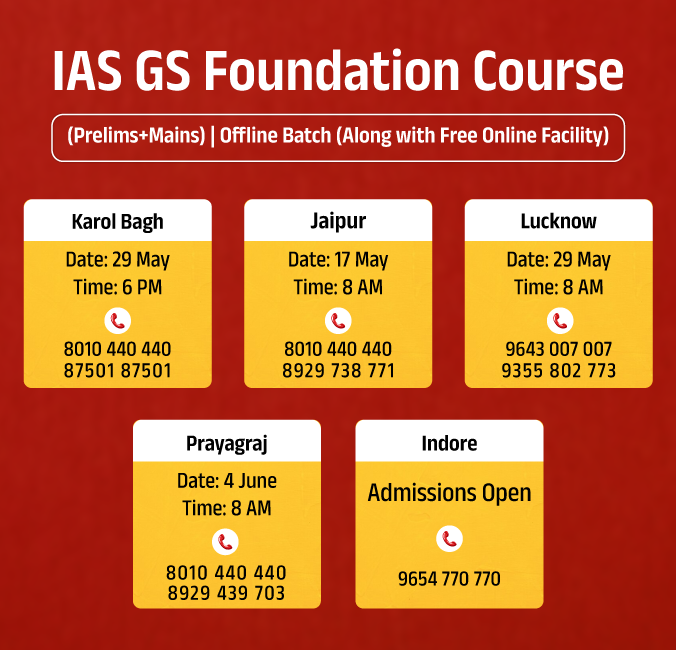
International Relations
50th G7 Summit
For Prelims: G7 Summit, G7 Countries, Indo-Pacific region,
For Mains: Role of the G7 summit in addressing global challenges, the significance of the Quad in promoting regional cooperation, India's foreign policy, the relationship between climate change and global security
Why in News?
Recently, the Prime Minister attended the annual G7 summit held in Italy from 13 to 15th June 2024. This summit marked the 50th anniversary of the group.
- This is his first foreign trip after assuming office for the third straight term.
What are the Key Highlights of the 50th G7 Summit in Italy?
- Promotion to G7 PGII (Partnership for Global Infrastructure and Investment):
- In the 50th G7 Summit, leaders decided to promote concrete G7 PGII (Partnership for Global Infrastructure and Investment) initiatives.
- This initiative was launched by the US and G7 allies at the 48th G 7 Summit in 2022 that aims to narrow the USD 40 trillion infrastructure gap in the developing world.
- It is a “values-driven, high-impact, and transparent infrastructure partnership to meet the enormous infrastructure needs of low and middle-income countries.
- Under this, G7 will mobilise USD 600 billion by 2027 to deliver infrastructure projects to developing and middle-income countries.
- Support and Promotion to India-Middle East-Europe Economic Corridor (IMEC):
- G-7 nations committed to promoting the IMEC.
- IMEC aims to create a comprehensive transportation network, comprising rail, road, and sea routes, connecting India, the Middle East, and Europe.
- IMEC:
- It was signed at the G20 Summit in New Delhi, in September 2023.
- This project forms part of the PGII.
- The proposed IMEC will consist of Railroad, Ship-to-Rail networks and Road transport routes extending across 2 corridors:
- East Corridor: Connecting India to the Arabian Gulf
- Northern Corridor: Connecting the Gulf to Europe.
- It will also include an electricity cable, a hydrogen pipeline and a high-speed data cable.
- India, the US, Saudi Arabia, UAE, the European Union, Italy, France, and Germany are the signatories of IMEC.
- Support to Infrastructure Projects:
- G7 also extended support for the Lobito Corridor in Central Africa and Luzon Corridor and the Middle Corridor.
- Lobito Corridor: It extends from the port city of Lobito on the Atlantic coast of Angola through the Democratic Republic of the Congo (DRC) and into Zambia.
- Luzon Corridor: It is a strategic economic and infrastructure corridor located on the island of Luzon in the Philippines. Luzon is the largest and most populous island in the Philippines.
- Middle Corridor: It is also referred to as the Trans-Caspian International Transport Route (TITR), a vital logistics and transportation network connecting Europe and Asia.
- This route serves as an alternative to the traditional Northern and Southern corridors, enhancing trade and economic cooperation between the regions it traverses.
- The Great Green Wall Initiative: It is a project aimed at combating desertification and land degradation in the Sahel region of Africa.
- it aims to create a wall of trees stretching across Africa from west to east to help prevent the spread of the Sahara Desert, improve biodiversity, and provide economic opportunities for local communities.
- G7 also extended support for the Lobito Corridor in Central Africa and Luzon Corridor and the Middle Corridor.
- Enhancing Interoperability of AI Governance:
-
The G7 leaders commit to step up efforts to enhance interoperability amongst their AI governance approaches to promote greater certainty, transparency and accountability.
- It focuses on managing risks in a way that supports innovation and promotes healthy, inclusive, and long-lasting economic growth.
-
- Extraordinary Revenue Acceleration (ERA) Loans for Ukraine:
- The G7 agreed to provide financing of approximately USD 50 billion in additional funding to Ukraine by the end of 2024.
What is G7?
- About:
- G-7 is a group of the most developed and advanced economies of the world. i.e. France, Germany, Italy, the United Kingdom, Japan, the United States, and Canada.
- The leaders of important international organisations like the European Union (EU), IMF, World Bank and the United Nations are also invited.
- Summits are held annually and hosted on a rotation basis by the group's members.
- Origin:
- The G7 originated from the Oil crisis of 1973 and the resulting financial crisis, which forced the leaders of 6 major industrial nations to convene a meeting in 1975.
- The participating countries were the US, UK, France, West Germany, Japan, and Italy.
- Canada joined in 1976, leading to the formation of the G7.
- It was known as the ‘G8’ for several years after the original seven were joined by Russia in 1997, but it was renamed as G7 after Russia was expelled as a member in 2014 following its annexation of the Crimea region of Ukraine.
- Nature of Grouping:
- Informal Grouping: The G7 is an informal grouping that operates outside of formal treaties and lacks a permanent bureaucracy. Each member nation takes turns leading the discussions (presiding nation).
- Decision Through Consensus: Despite the absence of legal enforcement, the G7's power stems from its members' economic and political clout. When these major powers can agree on a course of action, it can significantly impact global issues.
- Limited Legislative Power: The G7 cannot enact laws directly. However, their pronouncements and coordinated efforts can influence international policies and shape global agendas.
- Purpose:
- Facilitate Dialogue: The G7 acts as a forum for member nations to have open and frank discussions on critical global issues. This allows them to understand different perspectives and build consensus.
- Forge Collective Action: It aims to develop coordinated political responses to global challenges. This could involve collaborative efforts on issues like trade agreements, security threats, or climate change initiatives.
- Set the Agenda: The G7's discussions and pronouncements can influence the direction of global conversations on pressing issues. This can help shape international policies and priorities.
- Significance:
- Wealth: Control 60% of global net wealth
- Growth: Drive 46% of global GDP
- Population: Represents 10% of the world's population.
Note
- India is not a member of the G7. However, India participated as a guest in the 2019, 2021, and 2022 G7 summits at the invitation of France, the UK, and Germany respectively.
Why is India's Role in the G7 Important?
- India's Economic Significance:
-
With a GDP of USD 3.57 trillion (nominal), India's economy is larger than 4 G7 member countries - France, Italy, the UK and Canada.
- According to the IMF, India is one of the fastest-growing economies in the world.
- India's abundant young and skilled workforce, coupled with its market potential, low manufacturing costs, and favourable business climate, make it an attractive investment destination.
-
- India's Strategic Importance in the Indo-Pacific:
-
India has emerged as a major strategic partner for the West in containing China's expanding influence, particularly in the Indian Ocean.
-
India's strategic partnerships with the US, UK, France, Germany, and Japan, as well as its rapidly expanding ties with Italy, make it a crucial player in the Indo-Pacific.
-
-
India's Role in Addressing the European Energy Crisis:
- India's ability to secure discounted Russian oil and supply refined fuels to Europe has made it an important player in addressing the European energy crisis.
- The war in Ukraine has caused an energy crisis in Europe as they cut back on Russian energy imports. India has acted as a transit country for Russian oil. This oil is then refined in India and exported to Europe, helping to alleviate the pressure on their economies.
- India's ability to secure discounted Russian oil and supply refined fuels to Europe has made it an important player in addressing the European energy crisis.
- India's Potential for Mediating the Russia-Ukraine Conflict:
- India's long-standing relationships with both Russia and the West position it as a potential mediator in the Ukraine conflict. By leveraging its neutral stance, India could offer a way out for both sides, facilitating dialogue and diplomacy to bring an end to the war.
The Oil Crisis of 1973-74
- About:
- It refers to a period of sudden surge in oil prices, accompanied by a decrease in supply which has destabilised the global economy since oil is a major source of energy for many countries.
- Trigger:
- Yom Kippur War (October 1973): Egypt and Syria launched a surprise attack on Israel. The United States intervened by resupplying the Israeli military during the conflict.
- OPEC's Political Leverage: The Organization of the Petroleum Exporting Countries (OPEC), consisting of major oil-producing nations, decided to use oil as a political weapon in response.
- OPEC's Actions:
- Oil Embargo: OPEC, particularly its Arab members, imposed an oil embargo on countries that supported Israel, including the United States and some European nations.
- Production Cuts: OPEC also reduced overall oil production, further tightening the supply.
- Impact:
- Supply Shortage: The embargo and production cuts led to a global oil shortage. Long lines formed at gas stations in many countries, and rationing became necessary.
- Price Hike: With reduced oil availability, prices heavily increased (from USD 3 to USD 11).
- Economic Downturn: Higher oil prices had a cascading effect. Transportation costs increased, raising the prices of goods and services. This fueled inflation and economic stagnation in many countries.
What are the Challenges to India in Balancing Power Conflict Between West and China-Russia?
- Defence Dependence: India's reliance on Russia for over 60% of its military equipment creates a complex situation. A strained West-Russia relationship could disrupt supply chains and force India to diversify its defence partnerships.
- Economic Interdependence: Deepening economic ties with both the US and China expose India to potential decoupling pressures. Balancing trade relations with these competing entities will be crucial.
- Divergent Approaches: Disagreements within the West regarding how to confront Russia and China create uncertainty for India. Aligning with one bloc too closely could alienate the other.
- Domestic Political Turmoil: Internal political divisions in Western democracies could lead to policy inconsistencies, further complicating India's strategic calculations.
- Border Disputes: Unresolved territorial disputes with China, coupled with China's growing assertiveness in the Indo-Pacific, will continue to pose a security threat to India.
- Geopolitical Rivalry: The intensifying competition between the US and China in the region could force India to take sides on issues that don't directly align with its national interests.
Conclusion
India's engagement with the G7 is crucial for the grouping to address the economic, geopolitical, and strategic challenges it faces. From its economic prowess and strategic significance in the Indo-Pacific to its role in the European energy crisis and potential for conflict mediation, India's participation in the G7 Summit holds immense value. As the global order continues to evolve, the G7's collaboration with India will be essential in shaping the future of international cooperation.
|
Drishti Mains Question: Analyse the significance of India's engagement with the G7 group of nations. Discuss the key areas of cooperation and the challenges faced by India. |
UPSC Civil Services Examination, Previous Year Questions (PYQs)
Prelims
Q. The term ‘Intended Nationally Determined Contributions’ is sometimes seen in the news in the context of (2016)
(a) pledges made by the European countries to rehabilitate refugees from the war-affected Middle East
(b) plan of action outlined by the countries of the world to combat climate change
(c) capital contributed by the member countries in the establishment of Asian Infrastructure Investment Bank
(d) plan of action outlined by the countries of the world regarding Sustainable Development Goals
Answer: (b)
Q. With reference to the Agreement at the UNFCCC Meeting in Paris in 2015, which of the following statements is/are correct? (2016)
- The Agreement was signed by all the member countries of the UN and it will go into effect in 2017.
- The Agreement aims to limit the greenhouse gas emissions so that the rise in average global temperature by the end of this century does not exceed 2°C or even 1.5°C above pre-industrial levels.
- Developed countries acknowledged their historical responsibility in global warming and committed to donate $1000 billion a year from 2020 to help developing countries to cope with climate change.
Select the correct answer using the code given below.
(a) 1 and 3 only
(b) 2 only
(c) 2 and 3 only
(d) 1, 2 and 3
Answer: (b)
Q. In which one of the following groups are all the four countries members of G20? (2020)
(a) Argentina, Mexico, South Africa and Turkey
(b) Australia, Canada, Malaysia and New Zealand
(c) Brazil, Iran, Saudi Arabia and Vietnam
(d) Indonesia, Japan, Singapore and South Korea
Ans: (a)
Mains
Q. ‘Climate change’ is a global problem. How India will be affected by climate change? How Himalayan and coastal states of India will be affected by climate change? (2017)
Q. Describe the major outcomes of the 26th session of the Conference of the Parties (COP) to the United Nations Framework Convention on Climate Change (UNFCCC). What are the commitments made by India in this conference? (2021)


Social Issues
Child Food Poverty
For Prelims: Child food poverty, Child undernutrition, Child stunting, UNICEF,Mid-day Meal (MDM) scheme, POSHAN Abhiyaan, The National Food Security Act (NFSA), 2013,
For Mains: UNICEF Report on Child Food Poverty, its impact on the development of children, ways towards ending severe child food poverty globally.
Why in News?
A recent UNICEF report titled ‘Child Food Poverty: Nutrition Deprivation in Early Childhood’ examines the status, trends, inequities and drivers of child food poverty in early childhood.
What are the Key Findings of the Report?
- Approximately 181 million children under the age of 5 years are living in severe child food poverty globally, which accounts for one in four children in this age group.
- According to UNICEF global databases, 2023,in India, 40% of children are living in severe child food poverty.
- Progress in addressing severe child food poverty is slow overall, but some regions and countries are demonstrating that progress is possible.
- Severe child food poverty affects children from both poor and non-poor households, indicating that household income is not the sole factor driving this issue.
- Children living in severe child food poverty lack access to nutrient-rich foods and are increasingly consuming unhealthy foods.
- The global food and nutrition crisis, as well as localised conflicts and climatic shocks, are intensifying severe child food poverty, particularly in fragile countries.
- In vulnerable communities in the Democratic Republic of the Congo and Somalia, more than 80% of parents reported that their child had been unable to eat for an entire day because of a lack of money or other resources.
- Severe child food poverty is a significant driver of child undernutrition.
- The prevalence of severe child food poverty being three times higher in countries with a high prevalence of child stunting.
What is Child Food Poverty?
- Definition:
- UNICEF defines child food poverty as children's inability to access and consume a nutritious and diverse diet in early childhood (under 5 years old).
- The term Child Food poverty or Child malnutrition covers two broad groups of conditions:
- One is ‘Child Undernutrition’—which includes
- Child Stunting (low height for age),
- Child Wasting (low weight for height),
- Underweight (low weight for age) and
- Micronutrient deficiencies or insufficiencies (a lack of important vitamins and minerals).
- The other is Child Overweight, obesity and diet-related eating habits.
- Childhood overweight occurs when children’s calorie intake from food and beverages exceeds their energy requirements.
- One is ‘Child Undernutrition’—which includes
Note
- Hidden hunger, also known as micronutrient deficiency, is a form of undernutrition that occurs when people do not have sufficient intake of essential vitamins and minerals in their diets.
What are the Key Drivers of Child Food Poverty?
- Poor Food Environments:
- Disruptions in Rural Areas: Adverse weather, climate shocks, insecurity, or poor infrastructure are disrupting food production and access in rural and remote areas.
- Example: Droughts and floods in African countries like Somalia, have disrupted food production, limiting access to diverse and healthy foods for children in those regions.
- The overabundance of Unhealthy Options: Globally, shops and markets in urban areas are flooded with ultra-processed foods (low in nutrients, high in unhealthy fats, sugar, and salt) that are aggressively marketed and often cheaper than healthier alternatives.
- Disruptions in Rural Areas: Adverse weather, climate shocks, insecurity, or poor infrastructure are disrupting food production and access in rural and remote areas.
- Poor Feeding Practices in Early Childhood:
-
Generational Knowledge Gaps: Inaccurate information and lack of proper guidance on child feeding practices are being passed down through generations, leading to inadequate diets for young children.
- Gender Inequality: Discriminatory gender norms in some countries are limiting women's access to information and income, hindering their ability to make informed decisions about their children's diets.
-
- Household Income Poverty:
-
Unaffordability of Nutritious Foods: Nutritious foods, especially animal-source proteins (eggs, meat, fish) and fruits and vegetables, are often more expensive than staple foods. This makes it difficult for low-income families to afford a balanced diet for their children.
- Example: Rising food prices due to inflation can push nutritious foods further out of reach for families living in poverty, forcing them to prioritise filling stomachs with less-nutritious options.
-
- Failing Food and Health Systems:
- Food Systems are failing to provide affordable, diverse, and nutritious food options for families and children.
- Lack of access to adequate information, counselling, and support on child feeding within healthcare systems hinders families' ability to make informed choices.
- Further, insufficient social safety nets leave vulnerable children exposed to malnutrition, especially in times of economic hardship.
What are the Impacts of the Child Food Poverty?
- Impaired Growth and Development:
- Physical Growth: Malnutrition, particularly undernutrition, can lead to stunting. Stunted growth has long-term implications for muscle and bone development, impacting overall physical health and stature.
- Cognitive Development: Undernourished children often experience deficiencies in essential nutrients crucial for brain development. This can lead to impaired cognitive function, reduced learning capacity, and lower educational attainment.
- Weakened Immune System:
-
Malnutrition weakens the immune system, making children more susceptible to infectious diseases like diarrhoea, pneumonia, and measles. These illnesses can further worsen nutritional status, creating a vicious cycle.
- Severe malnutrition can lead to increased mortality in children, particularly in the first five years of life.
-
- Long-Term Health Issues:
-
Chronic Diseases: Childhood malnutrition has been linked to an increased risk of developing chronic diseases like diabetes, heart disease, and certain cancers later in life. This can place a significant burden on healthcare systems in the long run.
- Reduced Productivity: The cognitive and physical limitations caused by malnutrition can hinder a child's ability to reach their full potential as adults. This can translate to lower productivity in the workforce and reduced economic opportunities.
-
- Perpetuating the Cycle of Poverty:
-
Children who experience malnutrition often come from impoverished backgrounds. The negative impacts on their health, development, and education can limit their ability to escape poverty, trapping them and future generations in a vicious cycle.
-
What can be done Towards Ending Severe Child Food Poverty Globally?
- Making Policy-Based Targets:
- Child food poverty elimination should be seen as a policy imperative with time-bound targets and results in relevant sectoral and multisectoral plans.
- Transforming Food Systems:
- Focus on Accessibility: Making nutritious foods readily available especially to vulnerable sections of population communities is crucial. This includes:
- Supporting small-scale farmers through grants and training to increase the production of nutrient-rich crops.
- Investing in infrastructure like storage facilities and transportation networks to reduce food waste and ensure year-round access to diverse food groups, especially in remote areas.
- Affordability: High food prices are a major barrier. Initiatives like targeted food subsidies for low-income families, school feeding programs, and price stabilization measures can help bridge this gap.
- Focus on Accessibility: Making nutritious foods readily available especially to vulnerable sections of population communities is crucial. This includes:
- Regulating the Food Industry:
- Curbing Unhealthy Marketing: Restricting the marketing of unhealthy foods and beverages targeted towards children is critical.
-
This can involve implementing regulations on advertising content, placement (for example, near schools), and age restrictions.
-
- Promoting Transparency: Promoting transparency in food labelling allows families to make informed choices. Clear labelling systems highlighting nutritional content, including sugar, salt, and unhealthy fats, can empower consumers.
- Curbing Unhealthy Marketing: Restricting the marketing of unhealthy foods and beverages targeted towards children is critical.
- Strengthening Health Systems:
- Early Childhood Nutrition Services: Integrating nutrition counselling and support into existing healthcare services like prenatal care and well-child visits is vital.
-
Healthcare professionals can offer guidance on appropriate infant and young child feeding practices to optimise nutrient intake.
-
- Community Outreach: Nutrition education programs for families can raise awareness about the importance of a balanced diet for child development.
- Social Safety Nets: Strengthening social safety nets that provide income support to vulnerable families can improve their ability to afford nutritious food.
- Early Childhood Nutrition Services: Integrating nutrition counselling and support into existing healthcare services like prenatal care and well-child visits is vital.
- Data and Monitoring:
- Improved Data Collection: Investing in robust data collection systems is crucial to accurately assess the prevalence and severity of child food poverty across different regions and demographics.
-
This allows for targeted interventions and tracks progress towards achieving national and global goals.
-
- Early Detection: Early detection of rising child food poverty, especially in fragile and humanitarian contexts, allows for timely responses and resource allocation to prevent further worsening of the situation.
- Improved Data Collection: Investing in robust data collection systems is crucial to accurately assess the prevalence and severity of child food poverty across different regions and demographics.
What are the Indian Initiatives Related to Child Food Poverty?
Conclusion
This UNICEF report presents a comprehensive analysis of child food poverty, highlighting the alarming scope and its detrimental consequences. By taking decisive action through the outlined recommendations, governments, partners, and organisations can work together to create a world where all children have access to a nutritious and diverse diet, reaching their full potential and breaking the cycle of poverty.
|
Drishti Mains Question: Q. What is Child Food Poverty? Discussing its impact on the development of children, suggest the ways towards ending severe child food poverty globally. |
UPSC Civil Services Examination, Previous Year Questions (PYQs)
Prelims
Q. Which of the following is/are the indicators/ indicators used by IFPRI to compute the Global Hunger Index Report? (2016)
- Undernourishment
- Child stunting
- Child mortality
Select the correct answer using the code given below:
(a) 1 only
(b) 2 and 3 only
(c) 1, 2 and 3
(d) 1 and 3 only
Ans: C
Mains:
Q. How far do you agree with the view that the focus on lack of availability of food as the main cause of hunger takes the attention away from ineffective human development policies in India? (2018)

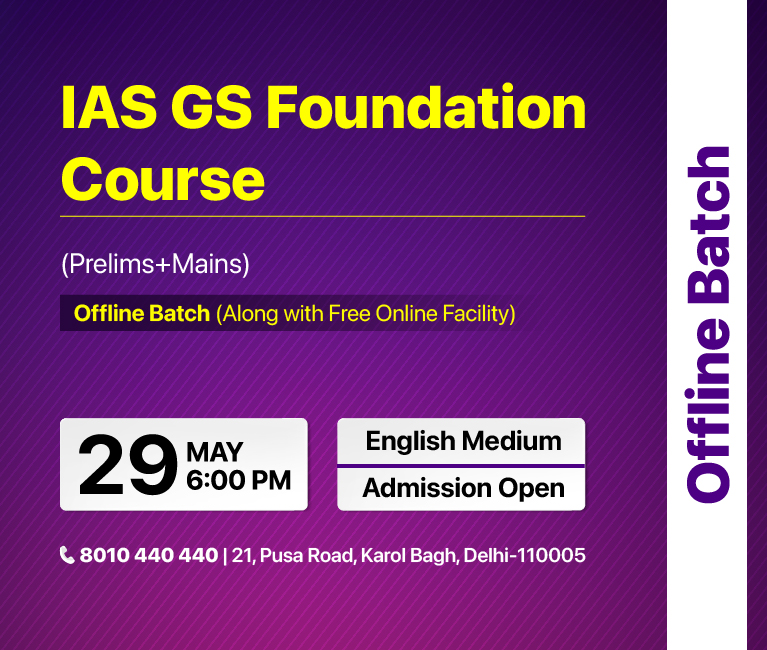
Indian Economy
India's New Economic Brain Power
For Prelims: Global Capability Centers (GCCs), Multinational Corporations (MNCs) , artificial intelligence/machine learning, research and development
For Mains: About Global Capability Centers (GCCs), their impacts and present status, Major shifts in the Indian Economy due to the rise of GCCs
Why in News?
In recent years, India's transformation from a back-office service provider to a strategic intellectual hub for Multinational Corporations (MNCs) has been driven by the rise of Global Capability Centers (GCCs).
- GCCs are offshore units established by MNCs to perform strategic functions using specialised talent, cost advantages, and operational efficiencies in different locations worldwide.
What are the Major Shifts in the Indian Economy due to the Rise of GCCs?
- From Back-Office to Strategic Partner:
- Traditionally, in the 1990s and 2000s India's role in the global economy was primarily focused on back-office functions like telemarketing and data entry.
- However, they have now expanded into complex tasks like R&D, analytics, artificial intelligence/machine learning, robotic process automation and product development, positioning India as a vital contributor to the global innovation ecosystem.
- Skill Development and Talent Pool Evolution:
-
The demand for skilled professionals by GCCs is driving a revamp of India's education and training system.
- Educational institutions are focusing on developing skills in STEM fields (Science, Technology, Engineering, and Mathematics) along with critical thinking and problem-solving abilities to meet the evolving needs of GCCs.
-
- Innovation and Knowledge Economy:
-
GCCs are not just replicating tasks but also becoming innovation hubs for their parent companies.
- This fosters a culture of research and development within India, leading to the creation of new technologies and solutions.
- The knowledge transfer from MNCs to the Indian workforce further fuels innovation and strengthens India's position in the knowledge economy.
-
- Job Market Transformation:
-
GCCs are creating high-paying jobs in various sectors beyond traditional IT services.
- This shift is attracting a wider range of talent, including engineers, data scientists, and financial analysts.
- The rise of GCCs offers better career prospects and contributes to an overall improvement in living standards for skilled professionals.
-
- Evolving IT Landscape:
- The presence of GCCs is driving investments in cutting-edge technologies like artificial intelligence, cloud computing, and big data analytics.
- This focus on advanced technologies positions India as a leader in the global IT services market.
- Increased Global Competitiveness:
-
The rise of GCCs showcases India's capabilities on the international stage.
- MNCs are increasingly recognizing the talent and cost-efficiency advantages offered by India.
- This is attracting further foreign investment and propelling India's competitiveness in the global knowledge economy.
-
- What are Global Capability Centers (GCCs)?
- About:
-
Global Capability Centers (GCCs), also known as Global In-House Centers (GICs), are strategic outposts established by multinational corporations (MNCs) in countries around the world.
- Operating as internal entities within the global corporate framework, these centres offer specialised capabilities including IT services, research and development, customer support, and various other business functions.
-
- Examples of GCCs:
-
General Electric (GE) has a large GCC in Bangalore, focused on R&D and engineering for its aviation and healthcare businesses.
- Nestle has established a GCC in Lausanne, Switzerland, dedicated to product development and innovation for its food and beverage brands.
-
- Present Status:
-
In 2022–23, around 1,600 GCCs made up a market of USD 46 billion, employing 1.7 million people.
-
Within GCCs, professional and consulting services are the fastest-growing segment despite only accounting for 25% of India's services exports.
-
Their compounded annual growth rate (CAGR) of 31% over the last four years significantly outpaces computer services (16% CAGR) and R&D services (13% CAGR).
-
-
Benefits of GCCs:
- Cost Efficiency: Setting up a GCC in a country with lower operational costs can provide significant savings for the MNC.
- Operational Efficiency: GCCs can handle specific functions, freeing up headquarters resources to focus on core business strategies.
- Market Access: GCCs can provide valuable insights into local markets, customer preferences, and regulatory environments, enabling the MNC to adapt its offerings and strategies for regional success.
- Impact on Local Economies:
-
GCCs create high-skilled jobs in the host country, boosting the local economy and knowledge base.
- They contribute to knowledge transfer and technology adoption within the host country.
- GCCs can also act as a catalyst for further foreign investment by demonstrating the country's skilled workforce and business environment.
-
- About:
Conclusion
The rise of GCCs signifies a significant shift in India's role within the global economy. By leveraging its intellectual capital, India is transforming from a service provider to a strategic partner for MNCs. This trend is poised to have a lasting impact on both India's economic development and the global tech landscape.
|
Drishti Mains Question: Q. What are Global Capability Centers (GCCs)? Discuss the major shifts in the Indian Economy due to the rise of GCCs. |
UPSC Civil Services Examination, Previous Year Questions (PYQs)
Prelims
Q. With reference to Foreign Direct Investment in India, which one of the following is considered its major characteristic? (2020)
(a) It is the investment through capital instruments essentially in a listed company.
(b) It is a largely non-debt-creating capital flow.
(c) It is the investment that involves debt-servicing.
(d) It is the investment made by foreign institutional investors in Government securities.
Ans: (b)
Q. Consider the following: (2021)
- Foreign currency convertible bonds
- Foreign institutional investment with certain conditions
- Global depository receipts
- Non-resident external deposits
Which of the above can be included in Foreign Direct Investments?
(a) 1, 2 and 3
(b) 3 only
(c) 2 and 4
(d) 1 and 4
Ans: (a)
Mains
Q1. “The broader aims and objectives of WTO are to manage and promote international trade in the era of globalization. But the Doha round of negotiations seems doomed due to differences between the developed and the developing countries.” Discuss from the Indian perspective. (2016)
Q2. What are the key areas of reform if the WTO has to survive in the present context of the ‘Trade War’, especially keeping in mind the interest of India? (2018)


Important Facts For Prelims
Developments in HIV Vaccine Research
Why in News?
Despite 4 decades of effort, traditional vaccine approaches have been unable to prevent HIV acquisition because the virus mutates rapidly and hides from the immune system.
- Experts believe that more sophisticated vaccine strategies will be necessary and that the research and development process will take some more time.
What is the Traditional Vaccine Approach against HIV?
- About:
- It refers to the development of vaccines that aim to prevent infection from the human immunodeficiency virus (HIV) using conventional methods such as inactivated or weakened forms of the virus, viral subunits, or other components that elicit an immune response.
- These approaches typically involve stimulating the body's immune system to recognize and attack HIV, thus preventing infection or reducing the severity of the disease.
- It teaches the body to fight off new invaders.
- Failure of Traditional Vaccine Approach Against HIV: This approach has failed for HIV due to the following reasons.
- Lack of Natural Self-Defence in Body: Unlike other viruses, most of the human bodies don't build good defences against HIV on their own.
- Rapid mutation: HIV has parts that mutate often, like a shape-shifter. Vaccines target these parts, but by the time the vaccine is ready, the virus has already changed its shape.
- Extreme viral diversity: HIV has a vast pool of circulating variants, making it difficult to target all strains.
- Complex immune response: A successful vaccine needs to stimulate both antibody and cellular immune responses against a rapidly changing virus.
What is the Progress in the Development of Effective HIV Vaccines?
- Broadly Neutralising Antibodies (bNAbs): It is a kind of antibody, which could neutralise a large number of circulating viral strains.
-
Germline Targeting Approach: It uses a series of vaccines to encourage the development and multiplication of specialised precursor B cells that have the make bnAbs.
- It identifies and matures B-cells into bNAb-producing cells against HIV to neutralise a wide range of HIV strains.
- Other Vaccines:
- N332-GT5 Immunogen: To train B cells to produce a different powerful antibody called BG18.
- MPER-Targeting Vaccine: It targets a more stable region of the HIV envelope that doesn't mutate as frequently.
HIV (Human Immunodeficiency Virus)
- HIV/AIDS is a chronic and potentially life-threatening condition caused by the human immunodeficiency virus (HIV) which targets the immune system, making individuals more susceptible to infections and diseases
- HIV attacks CD4, a type of White Blood Cell (T cells) in the body’s immune system.
- T cells are those cells that move around the body detecting anomalies and infections in cells.
- After entering the body, HIV multiplies itself and destroys CD4 cells, thus severely damaging the human immune system. Once this virus enters the body, it can never be removed.
- Related Initiatives: The HIV & AIDS Prevention and Control Act, 2017, Project Sunrise, 90-90-90, The Red Ribbon, Global Fund to Fight AIDS, Tuberculosis and Malaria (GFATM).
Prevalence of HIV-AIDS
- It is estimated that globally 39 million persons are living with HIV (Human Immunodeficiency Virus). In India the figure is 2.4 million.
- There were 1.3 million new HIV infections in 2022 globally and 63,000 in India.
- In 2022, 650,000 persons died due to these conditions globally. In India, AIDS caused 42,000 deaths. Many of these opportunistic infections are preventable and treatable.
Read more: ART’s Intervention in HIV/AIDS Treatment, Human Immunodeficiency Virus, UNAIDS Report: Progress & Challenges in HIV/AIDS Fight
UPSC Civil Services Examination Previous Year Question (PYQ)
Q. Which of the following diseases can be transmitted from one person to another through tattooing? (2013)
- Chikungunya
- Hepatitis B
- HIV-AIDS
Select the correct answer using the codes given below:
(a) 1 only
(b) 2 and 3 only
(c) 1 and 3 only
(d) 1, 2 and 3
Ans: (b)


Rapid Fire
Monsoon Croaks Bioblitz
Recently, the Kerala Forest Research Institute (KFRI) is organising Monsoon Croaks Bioblitz 2024.
- The "Monsoon Croaks Bioblitz" is a four-month-long public participation science project aimed at documenting the frogs of Kerala during the monsoon season, running from June to September.
- The scientific observations will be part of the Global Biodiversity Information Facility (GBIF) database, which can be used for biodiversity awareness, habitat conservation, species conservation etc.
- The project aims to identify key habitats to protect frogs, which serve as indicators of the ecosystem's health.
- Factors such as climate change, untimely rainfall patterns, habitat loss, and water pollution are challenging the survival of frogs, leading to 41% of the world's frogs being on the IUCN Red List of endangered species.
- Kerala alone has more than 200 frog species, emphasising the importance of conservation efforts.
- The topmost observed species is the Wayanad Bush Frog (Pseudophilautus wynaadensis) followed by the Asian Common Toad (Duttaphrynus melanostictus).
- The important amphibian species recorded includes Critically Endangered Resplendent Shrub frog (Raorchestes resplendens), Endangered Malabar Torrent Toad (Blaira ornata), Vulnerable Anaimalai Flying Frog (Rhacophorus pseudomalabaricus) and the Near Threatened Purple Frog (Nasikabatrachus sahyadrensis).
Global Biodiversity Information Facility (GBIF):
- It is an international open data infrastructure, funded by governments. It allows anyone, anywhere to access data about all types of life on Earth.
Read more: Biodiversity Management in India


Rapid Fire
Global Wind Day 2024
Recently, the Ministry of New and Renewable Energy (MNRE) organised ‘Global Wind Day’ on the 15th June 2024 with the theme of “Pawan Urja: Powering the Future of India”.
- The event aimed at celebrating the success of the Indian Wind Sector and discussing ways to accelerate wind energy adoption in India.
- India has a cumulative installed wind power capacity of 46.4 GW by May 2024 (4th largest in the world) after China, US and Germany.
- Wind energy is crucial for India's efforts to achieve 50% of its electric power installed capacity from non-fossil fuel-based resources (500 GW renewable energy capacity) by 2030 and net zero by 2070.
- Gujarat, Karnataka, and TamilNadu are leading wind-energy producing states in India.
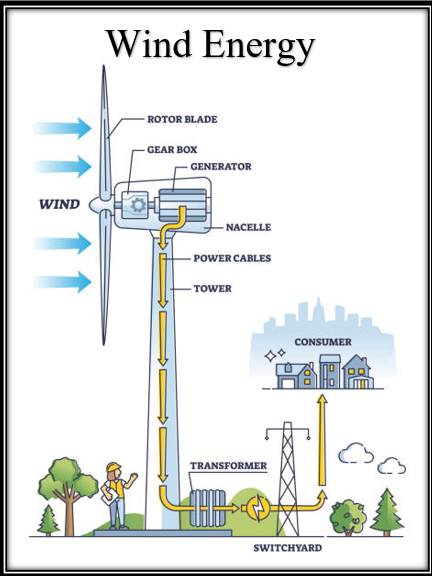
Read more: India's Wind Energy Potential


Rapid Fire
India's TB Diagnostics Tech Wins Acclaim at WHA
Recently, the Truenat, a rapid molecular diagnostic test for pulmonary and extrapulmonary TB and rifampicin-resistant TB, was hailed at the 77th World Health Assembly in Geneva.
Truenat:
- This portable, battery-operated machine can deliver results in less than an hour and can test for over 40 diseases.
- In India, it is used at over 7,000 primary and community health centres under the National TB Elimination Programme, and in around 1,500 private labs.
- The World Health Assembly (the decision-making body of the WHO) appreciated India’s effort to eliminate TB and recognized India's innovative initiatives including the use of Truenat machines and handheld X-ray devices as potential global models.
- Handheld X-ray devices are used in India's TB programme to diagnose TB in challenging operational environments.
- The WHO reports over 10 million new cases of TB every year.
- India accounts for 27% of the global TB burden. Over 1,400 patients die from TB every day in India
- Under Pradhan Mantri TB Mukt Bharat Abhiyan India aims to eliminate TB by the year 2025.
Read more: Pradhan Mantri TB Mukt Bharat Abhiyan, India TB Report 2024


Rapid Fire
Musankwa Sanyatiensis
Recently, scientists have discovered fossils of a new dinosaur species, Musankwa sanyatiensis, along the shores of Lake Kariba in Zimbabwe.
- This herbivorous dinosaur weighed around 390 kg and lived in swampy areas during the Late Triassic period (about 210 million years ago).
- It is named after the houseboat used during the expeditions and the Sanyati River flowing into Lake Kariba.
- It is the first dinosaur named from the Mid-Zambezi Basin in over 50 years and only the 4th dinosaur species named from the country.
- Africa has a long history of dinosaur discoveries, with the first found in South Africa just 3 years after the term "dinosaur" was coined in 1842.
- Dinosaurs (a diverse group of reptiles) lived around 243 to 233 million years ago, and diversified into various forms during the Jurassic and Cretaceous periods.
- They include birds, which evolved from theropods, and extinct non-avian dinosaurs.
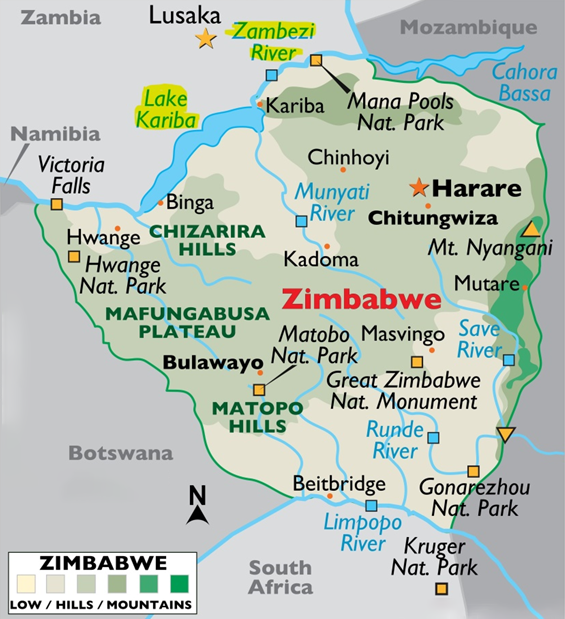
Read more: Connection Between Dinosaurs and Birds, Dinosaur Fossil -Thanatotheristes


Rapid Fire
FSSAI Cracks Down on Misleading
Recently, the Food Safety and Standards Authority of India (FSSAI) has directed manufacturers (Food Business Operators (FBOs) to remove "100% fruit juice" claims from products made with reconstituted juice.
- Reconstituted juices are made by adding water back to concentrated fruit juice.
- FSSAI aims to prevent misleading consumers who might believe they're getting pure, undiluted juice.
- Key Regulations:
- No "100% Juice" Claims: As per Advertising and Claims Regulations (2018), such claims are not allowed for any fruit juice product.
- "Reconstituted" Labeling: Food Products Standards & Additives Regulations (2011) mandates that reconstituted juices must clearly state "reconstituted" in the ingredient list.
- Sweetener Transparency: Juices with added nutritive sweeteners exceeding 15 gm/kg must be labeled "Sweetened Juice."
- FSSAI
- Established under the Food Safety and Standards Act (2006).
- An autonomous body under the Ministry of Health and Family Welfare.
- Mission: Setting world-class food safety standards, promoting good manufacturing practices, and ensuring food businesses adhere to these regulations.
Read more: Food Safety and Standards Authority of India (FSSAI), FSSAI to Streamline Food Safety Regulations



